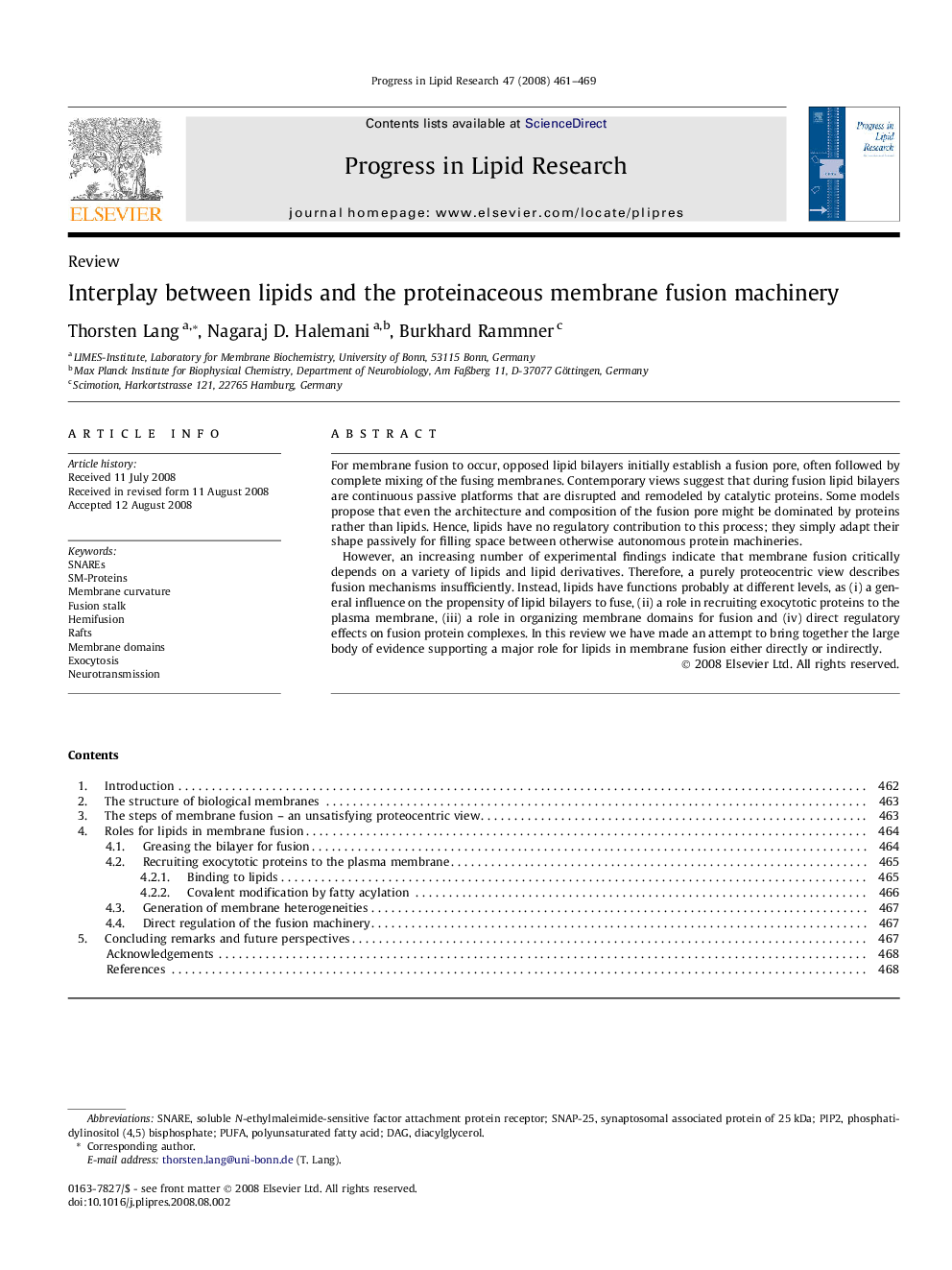| Article ID | Journal | Published Year | Pages | File Type |
|---|---|---|---|---|
| 2019321 | Progress in Lipid Research | 2008 | 9 Pages |
For membrane fusion to occur, opposed lipid bilayers initially establish a fusion pore, often followed by complete mixing of the fusing membranes. Contemporary views suggest that during fusion lipid bilayers are continuous passive platforms that are disrupted and remodeled by catalytic proteins. Some models propose that even the architecture and composition of the fusion pore might be dominated by proteins rather than lipids. Hence, lipids have no regulatory contribution to this process; they simply adapt their shape passively for filling space between otherwise autonomous protein machineries.However, an increasing number of experimental findings indicate that membrane fusion critically depends on a variety of lipids and lipid derivatives. Therefore, a purely proteocentric view describes fusion mechanisms insufficiently. Instead, lipids have functions probably at different levels, as (i) a general influence on the propensity of lipid bilayers to fuse, (ii) a role in recruiting exocytotic proteins to the plasma membrane, (iii) a role in organizing membrane domains for fusion and (iv) direct regulatory effects on fusion protein complexes. In this review we have made an attempt to bring together the large body of evidence supporting a major role for lipids in membrane fusion either directly or indirectly.
